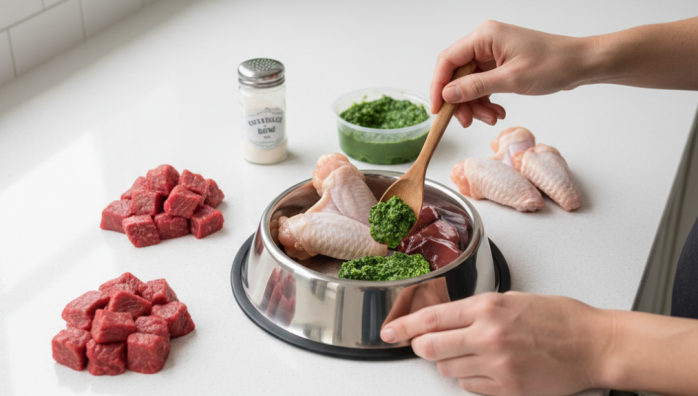Balancing Essential Nutrients Raw Pet Meals
by admin in Pet Care Basics 23 - Last Update November 24, 2025

When I first ventured into the world of raw feeding, I was completely overwhelmed. The idea of creating a Biologically Appropriate Raw Food (BARF) diet from scratch felt like a high-stakes science project. I read forums and books, and honestly, the sheer volume of information on balancing nutrients was intimidating. My biggest fear was that I\'d miss something crucial and my dog wouldn\'t get what he needed to thrive. It took a lot of trial, error, and observation, but I eventually found a rhythm and a set of principles that took the guesswork out of meal prep.
The 80/10/10 rule was my starting point
The most common guideline you\'ll see is the 80/10/10 rule: 80% muscle meat, 10% edible bone, and 10% organ meat. In the beginning, I treated this like a sacred text, weighing everything to the gram. It’s a fantastic starting point for understanding the basic components, but I quickly learned it’s more of a general guide than a strict daily requirement. Balance over time is the real key.
Muscle meat: The foundation of the meal
This is the easy part, right? Well, sort of. While it makes up the bulk of the meal, variety is incredibly important. I made the mistake early on of just sticking to chicken because it was cheap and easy. But rotating proteins—beef, lamb, turkey, fish—provides a much broader range of amino acids and fats. I also found my dog\'s digestion and enthusiasm for his meals improved significantly once I started offering more variety. Heart and tongue are technically muscle meats, and they are fantastic, nutrient-dense additions I try to include weekly.
Bone content: For calcium and structure
This was the scariest part for me. The role of raw, edible bone is to provide essential calcium and phosphorus, which are vital for skeletal health. I learned that you can\'t just throw in any old bone. Hard, weight-bearing bones from large animals like beef leg bones are for recreational chewing, not consumption. I stick to softer, fully edible bones like chicken wings, duck necks, or pork ribs. The key is that the bone should be consumed entirely with the meal. If you\'re not comfortable with whole bones, a ground bone-in mince is a great alternative.
Organ meats: The nutrient powerhouses
If muscle meat is the foundation, organ meat is the multivitamin. This is where so many crucial nutrients are concentrated. A good rule of thumb within the 10% organ portion is that half (or 5% of the total meal) should be liver. Liver is packed with Vitamin A, so you don\'t want to overdo it. The other 5% should be other secreting organs like kidney, spleen, or pancreas. I introduce any new organ meat slowly, as it’s very rich and can cause loose stools if you add too much at once.
Going beyond the basic ratio
Once I got comfortable with the 80/10/10 framework, I started looking at the small additions that could elevate my dog\'s nutrition even further. This is where I feel I made the biggest difference in his overall health.
Adding essential fatty acids
Most farmed meats are lower in Omega-3 fatty acids than their wild counterparts. To bridge this gap, I add oily fish like sardines or a good quality fish or krill oil a few times a week. I saw a noticeable improvement in the softness and shine of my dog\'s coat within a month of doing this consistently.
The role of extras: Veggies, seeds, and eggs
The debate on whether dogs need vegetables is a heated one in the raw feeding community. My personal approach is to include a small amount of pureed, dark leafy greens (like kale or spinach) and colourful veggies (like carrots or bell peppers). I see them not as a filler, but as a source of antioxidants and fibre. I also add a raw egg a couple of times a week for a boost of nutrients. Ultimately, the best diet is the one your specific pet thrives on. It\'s a journey of observation, and while these guidelines helped me immensely, I always recommend you chat with a holistic vet to ensure you\'re on the right track for your best friend.














